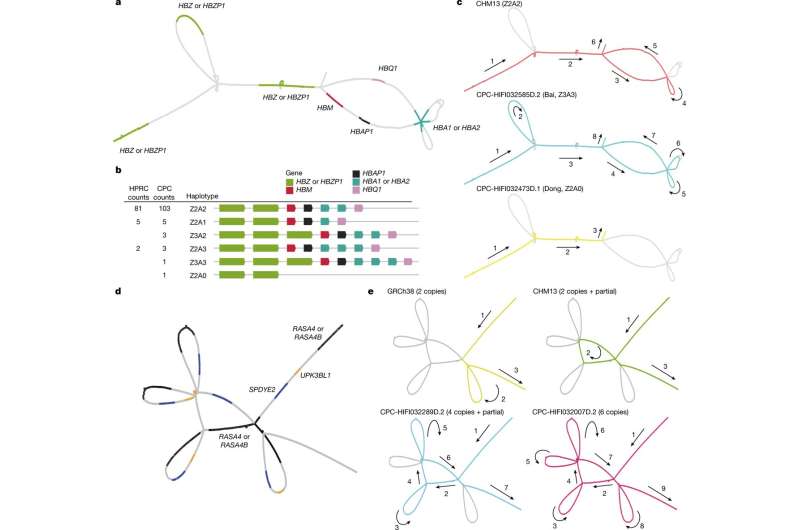June 15, 2023 report
This article has been reviewed according to Science X's editorial process and policies. Editors have highlighted the following attributes while ensuring the content's credibility:
fact-checked
peer-reviewed publication
trusted source
proofread
Consortium analyzes genomic sequences for 36 minority ethnic groups in China

A large team of genetic engineers affiliated with institutions across China has completed the first phase of its initiative to create a pangenome reference of genome data for people of different ancestries in China. In their project, reported in the journal Nature, the group, which is part of The Chinese Pangenome Consortium (CPC), sought to sequence the genomes of minority groups across China. The editors at Nature have also published a Research Briefing outlining the work in the same journal issue.
The CPC was created in China to address a concern that has arisen in the global medical community—most genomic sequencing has involved people from the major population groups. For example, in China, Hans are the dominant ethnic group, so most genetic research in China has been conducted using Han genomes.
This is a problem because slight differences in genomes can result in treatments that fail to work or cause unexpected problems among people from minority ethnic groups. The consortium has divided its effort into several phases, the first of which was to choose a list of minority ethnic groups to study and then to conduct sequencing and genetic analysis on tissues collected from members of each group in that list.
In its first phase, the team created a list of 36 minority ethnic groups (there are currently 55 known minority ethnic groups in China) and collected tissues samples from 58 people who were represented on the list. They then conducted sequencing on all the samples, resulting in 116 assemblies (two from each volunteer). They conducted haplotype phasing to sort the assemblies by parentage. The team added 189 million base pairs of packaged sequences that varied between individuals. They also found 1,367 protein-coding duplications.
The research team also found what they describe as considerable variation between groups in certain sequences, which they suggest confirms the need for the CPC to continue its work.
More information: Yang Gao et al, A pangenome reference of 36 Chinese populations, Nature (2023). DOI: 10.1038/s41586-023-06173-7
A pangenome reference representative of 36 minority Chinese ethnic groups, Nature (2023). DOI: 10.1038/d41586-023-01675-w
© 2023 Science X Network

















